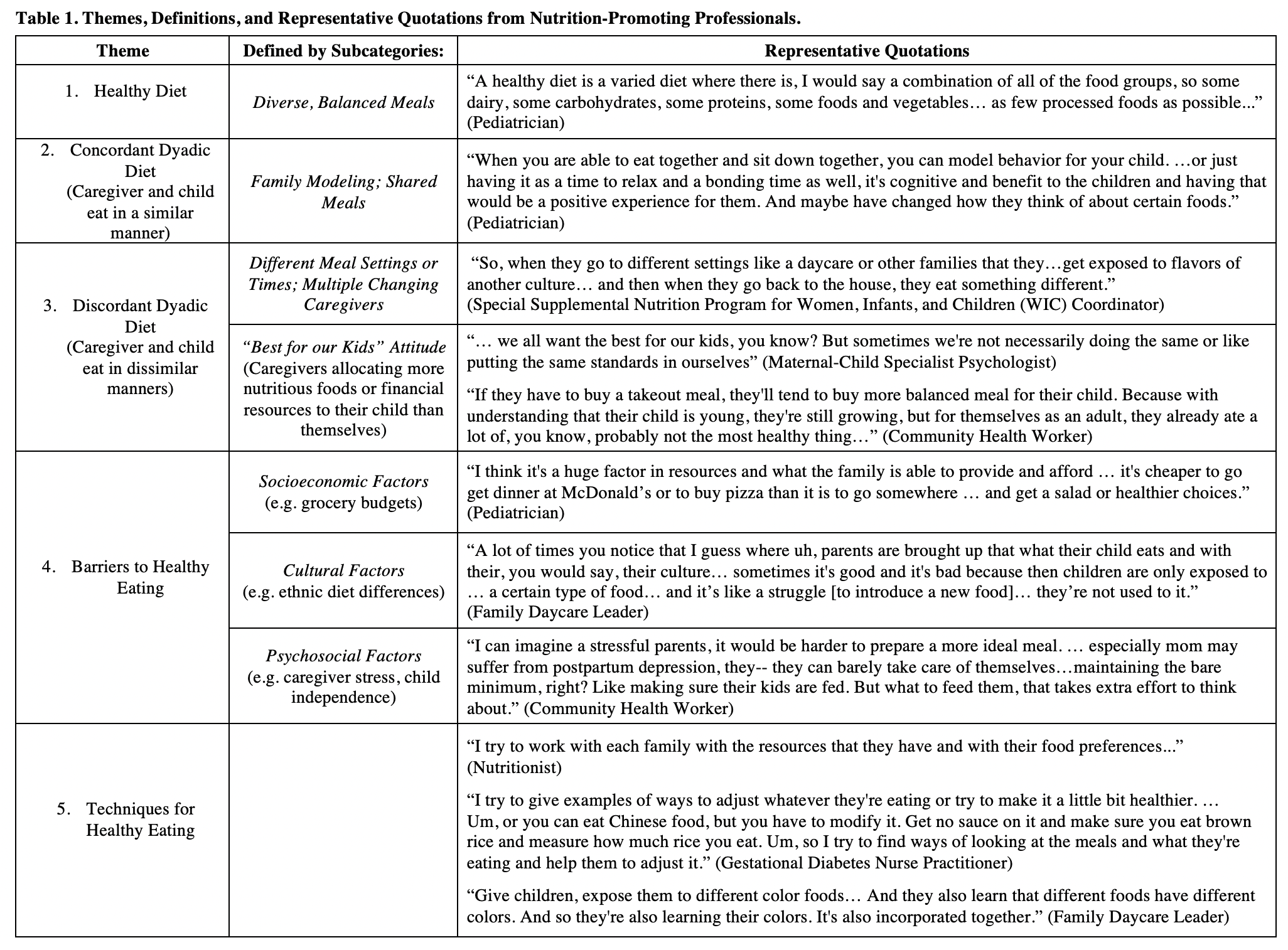Pediatric Nutrition
Pediatric Nutrition
44 - Defining and Contextualizing the Dyadic (Caregiver-Child) Diet
Publication Number: 44.253

Abigail L. Nita, BS Ed (she/her/hers)
Research Data Associate
New York University Grossman School of Medicine
New York, New York, United States
Presenting Author(s)
Background:
Over 90% of children in the US fail to meet healthy dietary guidelines. Despite evidence of parental dietary influence on a child, there is a gap in understanding how child and caregiver diets are interrelated (dyadic diet).
Objective:
We aimed to 1) understand clinical perspectives on the concept of the dyadic diet, and 2) assess how the dyadic diet is influenced by the social determinants of health and psychosocial contexts.
Design/Methods:
We implemented a qualitative study using purposive sampling to conduct semi-structured Zoom interviews with NYU affiliated nutrition-promoting professionals. Zoom audio recordings were professionally transcribed verbatim and a qualitative thematic analysis was performed. Two study team coders read a subset of transcripts and generated a preliminary codebook using Dedoose software (Version 4.12) for data management. Iterative coding was completed through study team reconciliation meetings until inter-rater reliability was achieved ( >80% agreement). Grounded subcategories were then abstracted upwards to themes.
Participants (n=12) all identified as female and were from a diverse set of professions and clinical sites including: directors of early child care centers and nutrition programs, dietitians, and pediatricians.
Results:
Five main themes were identified (Table 1). A 1) healthy diet was broadly defined, but all participants agreed on diverse, balanced meals as nutritious. Participants identified instances of 2) concordant and 3) discordant dyadic eating patterns. Concordant dyadic diets included subcategories of family modeling through shared meals. Discordant diets were defined through subcategories such as: different meal settings or times between family members; varying influences of multiple, changing caregivers; and caregivers investing more in their children than themselves with a “best for our kids” attitude.
Participants noted 4) barriers to healthy eating for a dyad result from the social determinants of health, such as socioeconomic factors, but also from cultural and psychosocial factors. They identified 5) techniques to encourage family-wide healthy eating from normalizing food conversations to diversifying food options.
Conclusion(s):
Dyadic diets are important in context, as is the need to collect insight from nutrition-related professionals when developing population-level interventions. While we reached thematic saturation at a sample size of 12, future work should seek perspectives on the dyadic diet concept and its relationship to family-centered health goals from a broader professional audience, as well as caregivers and families.

